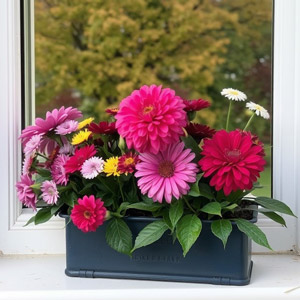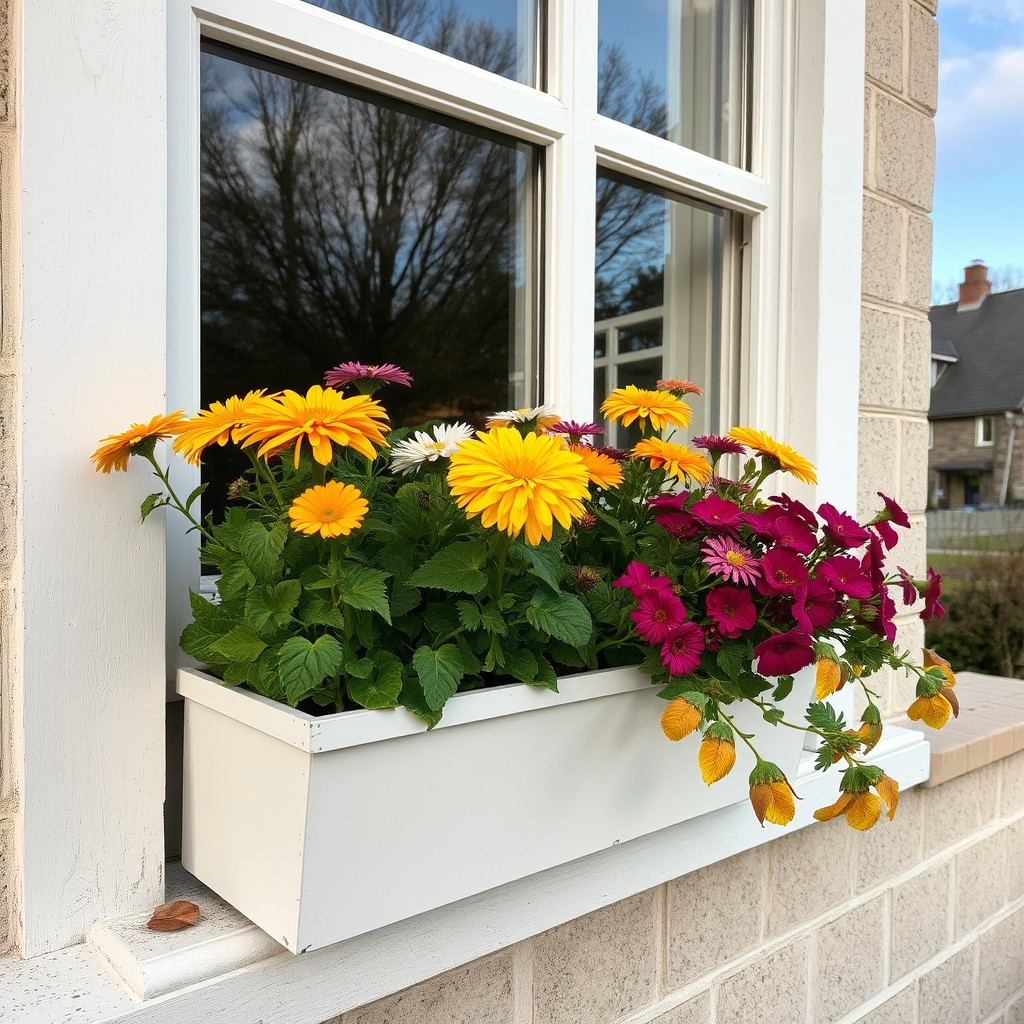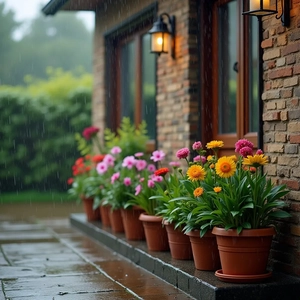
Window sills also provide an original backdrop for seasonal display. A thoughtfully assembled window box can add personality and vitality to a home’s curb appeal all year long. Every season offers new chances to update this tiny but expressive space. Strategic mixes of colors, textures, and plant species yield visual appeal even in tight compositions. Halfway through your design process, browsing the window boxes category can assist in connecting your vision to functional possibilities that satisfy form as much as function.
Spring: Renewal and Vibrancy
Winter’s conclusion brings life to earth again, which makes spring an ideal time to celebrate flowers. The attention is drawn to soft shades of transition, freshly bloomed flowers, and explosive development. The plants that bloom in cooler seasons thrive in this setting, providing dynamic pairings of fragrance and shape.
- Primroses, pansies, and violas
Open the season with dainty petals and vibrant colors. - Tulips and daffodils
Add height and framework. - Trailing ivy
Offers a soothing green background. - Chives and parsley
Add fragrance with functionality to a windowsill garden that is beautiful as much as useful.
Seasonal changes such as cycle blooms or soil renewal after frost help to produce long-lasting outcomes. Spring window boxes need to have an optimistic, not cluttered, sense to them — have room to grow and change as days lengthen.
Summer: Bold and Plentiful
Summer window boxes are at their healthiest when packed with dense, heat-and-sun-tolerant foliage and colorful blooms. It’s statement-making season — rich colors, dense arrangements, and stacked heights are the look.
Drought-tolerant plants minimize maintenance and maintain their vibrancy even in heat waves.
- Petunias, geraniums, and marigolds
Tolerant of full sun and dry earth, dependable selections. - Calibrachoas and lantanas
Provide extended blooms. - Ornamental grass
Adds height and motion. - Succulents such as sedum
Thrive with minimal care and add unexpected textural elements.
Well-planned summertime flowerboxes embrace the vibrancy of the season. Plant with regular deadheading to induce blooms and slow-release plant foods to maintain optimal appearance.
Autumn: Texture and Warmth
With cooler temperatures and decreasing sunlight, autumn prompts a turn to earthy tones and dense textures. Autumn’s transitional phase requires careful combinations of late-blooming flowers, leaf-based plants, and even edible flowers which provide visual impact and diversity.
These combinations are used effectively in autumn displays. All are capable of withstanding cooler temperatures while still retaining their colors:
- Ornamental kale or cabbage
Provides sculptural interest with variegation from deep green to violet. - Chrysanthemums
Traditional autumn flowers in a range of colors from gold to burgundy. - Heuchera (Coral Bells)
Perennials with dramatic leaf colors from amber to plum. - Miniature decorative peppers
Tiny, colorful fruits that stay beautiful for weeks. - Trailing ivy or vinca
Creates movement and softens box edges.
Autumn displays are improved by layered arrangements — upright, mounding, and cascading features working together. With intelligent selection, a window box will reflect fall colors long after trees have shed their foliage.

Winter: Structure and Contrast
Winter window boxes are more dependent on shape, foliage, and contrast rather than flowers. The idea is to have something that is interesting even under snow or frost. Evergreens and structural elements ensure definition and appeal during colder months.
- Boxwood and dwarf spruce
Provide sturdy frameworks. - Silver dusty miller or redtwig dogwood stems
Add striking silhouettes. - Winterberry shrubs
Offer bright color against snow. - Pinecones, twigs, dried seed pods
Add lasting visual interest and resist harsh weather.
Smart lighting, such as battery-operated LED fairy lights, enhances winter arrangements without requiring intensive maintenance.
A winter box must be deliberate, not stripped. Avoid overfilling with artificial décor. Let natural textures speak for themselves, expressing quiet structure and simple elegance.







